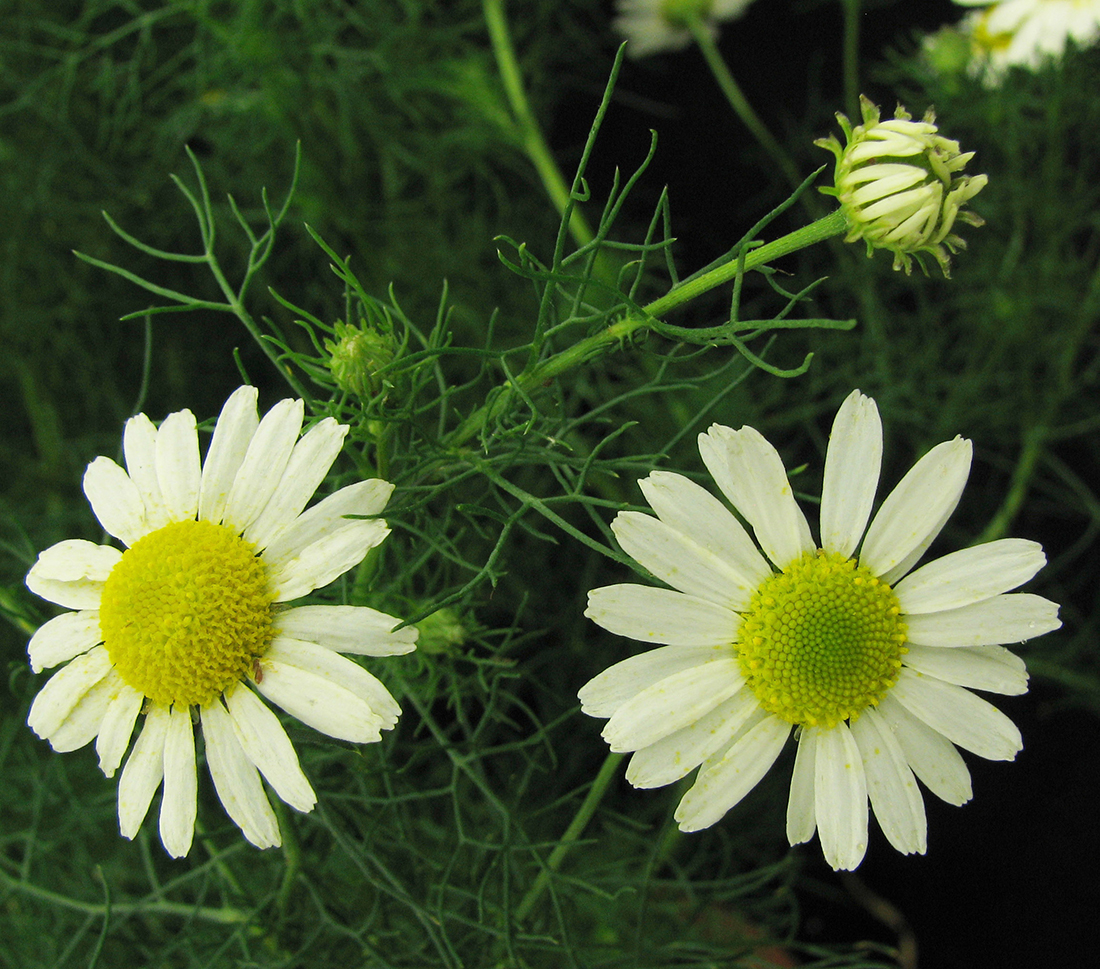Scentless camomile
- Composite or Aster (Asteraceae family):
- Tripleurospermum inodorum (L.) Sch. Bip.
- EPPO code:
- MATIN
- Other names:
- Scentless mayweed
Species information
- Lifecycle:
- Short lived perennial but occasionally an annual or biennial.
- Propagation:
- Reproduces by seed (achene) only.
- Emergence:
- Peak emergence has typically been October, with significant emergence also in April, May and August.
- Range and habitat:
- Most commonly found in the Golden horseshoe area of Ontario but has been documented in southern, central and eastern Ontario.
- Competitiveness:
- Considered highly competitive and significantly reduces crop harvesting efficiency.
Identification clues
Seedling
- Cotyledons:
- Orbicular to oblong.
Leaves
- First leaves:
- Green, deeply divided into 4 or 5 segments.
- Mature leaves:
- Green, finely divided, hairless and odourless. Plants will usually form a rosette.
Mature plant
- Stem:
- Green, hairless, but can be reddish/green at the base.
- Flowers:
- Daisy like flower head; yellow centered, tubular with white ray florets. Flowers in the summer months.
- Fruit/seeds:
- dark brown, 1–2 mm long, 0.5–1 mm wide.
- Roots:
- A dense fibrous root system that firmly anchors the plant to the ground.
Often mistaken for
I know it's not Stinking mayweed because Scentless chamomile lacks any odour when the leaf tissue is crushed, and the leaves are hairless while stinking mayweed has slightly hairy leaves.
I know it's not Pineappleweed because Scentless chamomile lacks any odour when the leaf tissue is crushed compared with a pineapple like odour of pineappleweed. Scentless chamomile has white florets on its flowering head, pineapple weed does not.
I know it's not Ox-eye daisy because the leaves are dramatically different with scentless chamomiles being finely divided compared to the broadly divided ox-eye daisy.





Updated: January 13, 2023
Published: January 13, 2023